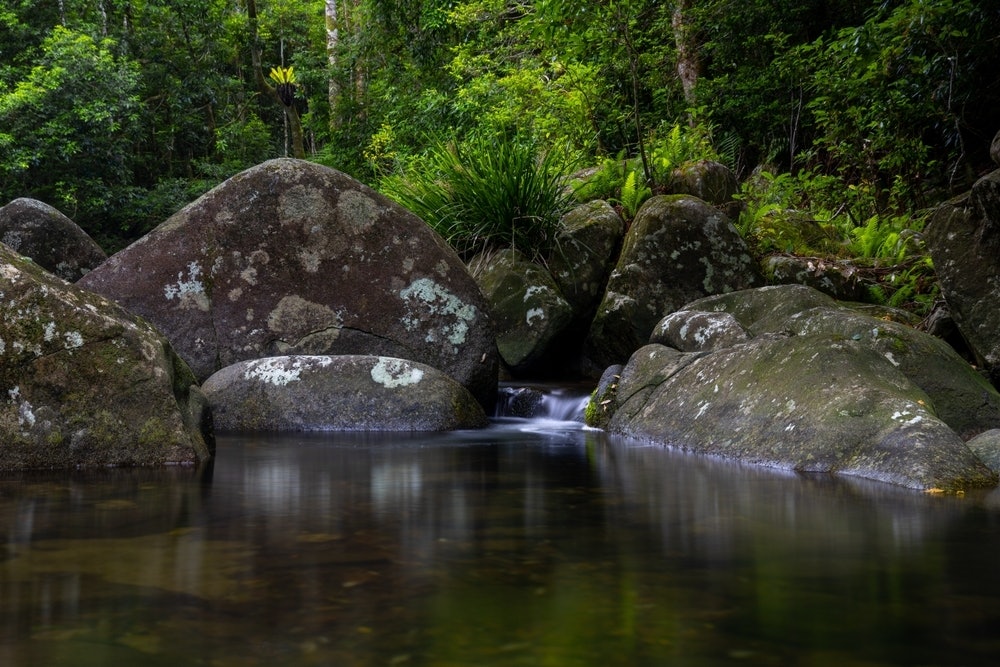Explore Glen Innes's National Parks

Coombadjha Creek | Washpool National Park
Washpool National Park
Washpool is part of the Gondwana Rainforests of Australia World Heritage Area and offers unforgettable wilderness walks through ancient landscapes, ranging from half an hour to several days. A magical place of deep gorges, crystal-clear waters and some of the most varied and untouched forest in NSW, including the world’s largest stand of coachwood trees. Check out these five fabulous walks and be immersed in the breathtaking beauty of Washpool.
Gibraltar Range National Park
Discover this pristine natural wonderland, renowned for its diverse landscapes and rich biodiversity, encompassing rugged mountain ranges, huge granite tors, lush rainforests, and open woodland. Visitors to the park can explore a network of walking trail through this ancient Gondwana forests, be enchanted by carpets of springtime wildflowers, and marvel at thundering waterfalls and awe-inspiring panoramic vistas. With its commitment to conservation and outdoor recreation, the Park stands as a hallowed destination for nature enthusiasts, hikers, and those seeking to immerse themselves in the untamed beauty of Australia's wilderness. There are endless paths through the forest - here are 14 trails to follow and find your own slice of paradise.
Mann River Nature Reserve
The Mann River is one of Australia’s most iconic canoeing and freshwater fishing rivers, with superb views across the Great Dividing Range and exceptional water clarity. The wide, grassy shores and shady picnic spots make it the perfect location for swimming, camping and a blissful alfresco afternoon nap!
Guy Fawkes National Park
An idyllic wilderness haven sought after by birdwatching enthusiasts and experienced bushwalkers who enjoy the challenge of exploring the valleys of peaceful gorges and slow-flowing rivers. Observe the mesmerising sight of the Guy Fawkes River as it cascades 100 meters over two magnificent waterfalls, with three viewing platforms (upper falls, lower falls, and valley view) offering breathtaking panoramas of the rugged gorge landscape beyond. A walking trail connects the lookout points, tracing the edge of the escarpment. During the warmer months, the upper falls area comes alive with the vibrant bloom of golden everlasting daisies, while the late spring and summer seasons showcase the delicate flowering of rare ground orchids. As you enjoy a picnic in the grassy woodlands area adjacent to the falls, keep your eyes peeled for the majestic wedge-tailed eagle soaring above, adding to the unforgettable experience.
Butterleaf National Park
From its position along the crest of the Great Dividing Range, the park marks a change in the geology of the area from east to west and supports a variety of forest environments, heaths and swamps of rocky outcrops, and provides a home to a wide variety of fauna, including yellow-bellied and greater gliders, spotted-tailed quolls and wombats.
Kings Plains National Park
Set amongst rolling farmlands, the park is the perfect escape for the adventurous traveller. Bushwalk and rock hop along the creek, past its pools and rapids, following the bank to the thundering, cascading Kings Plain Falls or mountain bike along the park’s 15km of trails, through grassy and shrubby woodlands, and a rare forest of McKies stringybark. Along the way, keep an eye out for the diverse variety of birds and wildlife, from brightly coloured turquoise parrots and crimson rosellas to eastern grey kangaroos and swamp wallabies.
Nymboida National Park
Encompassing an expanse of diverse ecosystems, from lush rainforests to dramatic, rugged gorges, the park captivates visitors with its pristine wilderness and breathtaking landscapes and is a haven for nature enthusiasts and adventurers alike. The Nymboida River, renowned for its crystalline waters and thrilling rapids, winds its way through the park, offering opportunities for kayaking, white-water rafting, and fishing. Traversing a tapestry of eucalyptus forests and ancient woodlands, the park's network of walking trails provides a chance to encounter a variety of native flora and fauna, including vibrant birdlife and elusive marsupials. Nymboida National Park stands as a testament to the unspoiled beauty of Australia's wilderness, inviting visitors to immerse themselves in its enchanting and unbridled natural wonders.

Wollomombi Falls
Wollomombi Falls (Oxley Wild Rivers National Park)
The second highest waterfalls in Australia, cascading dramatically 220m to the valley below.
Cathedral Rock National Park
Magnificent granite tors and outcrops, formed around 230 million years ago, perfect for rock hopping, bushwalking, camping and exploring.
Goonoowigall State Conservation Area
Scenic area covering 1,057 hectares, with low hills and large dramatic boulders, home to protected local wildlife and rare plants. Enjoy an easy stroll or longer trek with 10 km of marked walking tracks though woodlands and alongside meandering creeks. Within the reserve, on Jukembal Land, is the Nhunta Karra Kara Track commemorating the Aboriginal families who made the Goonoowigal area (known as the Inverell "fringe dwellers" camp) their home from the 1940s until the 1970s.
To listen to their fascinating and moving stories as you walk the track, download the free Soundtrails App then open Goonoowigal Soundtrail.
Kwiambal National Park
Located at the junction of the Severn and Macintyre Rivers, this tranquil park is a nature-lovers paradise, featuring sandy riverbank beaches, invigorating plunge pools, thundering waterfalls and dramatic granite gorges. Perfect secluded spots for picnicking, swimming, camping, fishing, canoeing, bushwalking, hiking and mountain biking. Highlights include Macintyre Falls Lookout, the Limestone Caves and the 4km loop Slippery Rock Walking Track.
Marked trails, picnic tables, BBQ and toilets.
Curry’s Gap State Conservation Area
The reserve was set aside for the preservation of its old-growth forests, which are home to a number of vulnerable animal species and is just on the outskirts of Tenterfield, at the base of Mount Mackenzie. The area was previously known as ‘The Common’ & many Aboriginal families were housed here from the 1930s through to the 1980s, before being permitted to live in town. It was also used as a training ground for the army during World War II. Now popular for bush walking and birdwatching you’ll find a waterhole, a small rock pool and remnants of original houses that were owned by residents of The Common.
